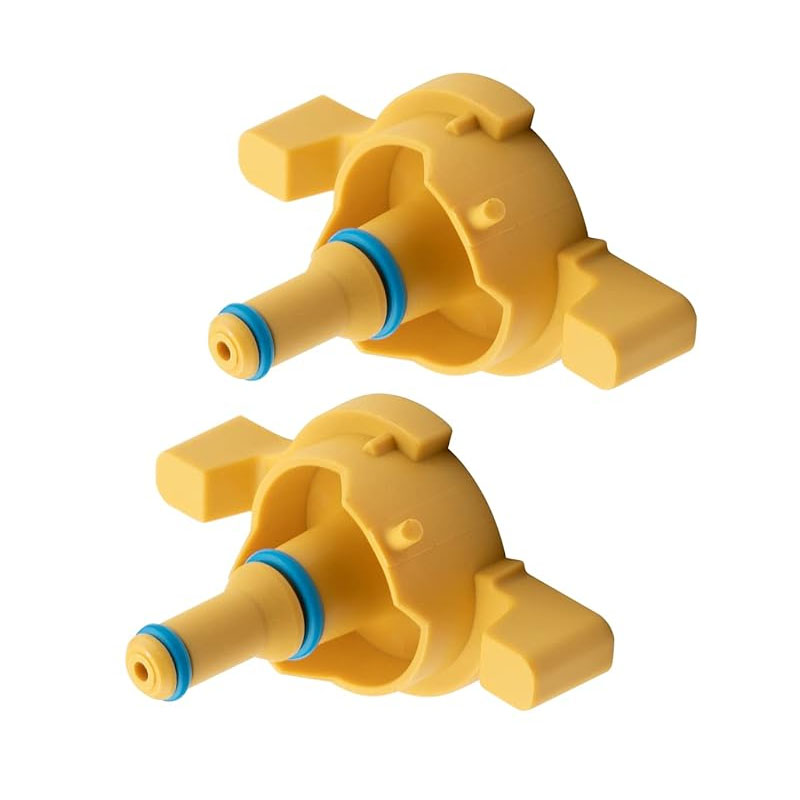Power Steering O-Ring Replacement Kit for Improved Steering Performance and Sealing
Understanding Power Steering O-Ring Kits Importance and Maintenance
Power steering systems play a crucial role in modern vehicles, allowing drivers to steer with minimal effort. They rely on hydraulic fluid pressure to enhance steering control, contributing to a smoother driving experience. A key component in these systems is the O-ring, a small but vital part that helps maintain the integrity of the hydraulic system. In this article, we will explore the importance of power steering O-ring kits, their components, and maintenance tips to ensure optimal performance.
What is a Power Steering O-Ring?
An O-ring is a circular rubber gasket that creates a seal between two or more elements in a hydraulic system. In power steering systems, O-rings are used to prevent leaks in various connections, including those between hoses, pumps, and steering gears. The integrity of these seals is essential for maintaining the correct pressure within the system. A failed O-ring can lead to fluid leaks, reduced steering effectiveness, and, ultimately, costly repairs.
Importance of Power Steering O-Ring Kits
Power steering O-ring kits typically include a variety of O-rings designed to fit different components of the steering system. These kits are essential for several reasons
1. Prevent Fluid Leakage O-rings help prevent hydraulic fluid from leaking out of connections. A well-sealed system ensures that the necessary pressure is maintained for optimal steering performance.
2. Ensure System Efficiency A deteriorating O-ring can lead to reduced system efficiency, making steering more difficult and increasing wear on other components. This can result in more frequent repairs and higher maintenance costs.
3. Enhance Longevity of Components By using high-quality O-rings and regularly replacing worn ones, vehicle owners can protect other components in the power steering system, such as pumps and hoses. This proactive approach can extend the lifespan of the entire system.
4. Improve Safety Effective power steering is crucial for safe vehicle operation. A failure in the system, often due to a worn O-ring, can lead to a loss of steering control, posing significant risks on the road.
Components of a Power Steering O-Ring Kit
power steering o ring kit

A typical power steering O-ring kit includes several types of rings that vary in size, shape, and material. Some common components include
- O-Rings for Hoses These are designed to seal the connections between power steering hoses and the pump or steering gear. - O-Rings for the Pump Specific O-rings are required to seal the power steering pump, preventing fluid leaks from this crucial component. - O-Rings for Steering Gear These rings ensure that the steering gear is properly sealed, allowing the system to function effectively without fluid loss.
Maintenance Tips
To ensure the longevity and efficiency of your power steering system, consider the following maintenance tips
1. Regular Inspections Periodically check for signs of fluid leaks around the power steering system. Look for puddles or spots under the vehicle.
2. Fluid Replacement Follow the manufacturer’s recommendations for fluid replacement. Old or contaminated fluid can wear out O-rings more quickly.
3. Replace Worn O-Rings If you notice any leaks or reduced steering performance, inspect the O-rings for signs of wear or damage. Replacing worn O-rings promptly can prevent further issues.
4. Use Quality Products When purchasing an O-ring kit, choose high-quality products that meet OEM specifications. This ensures better performance and durability.
Conclusion
Power steering O-ring kits are essential for maintaining the efficiency and safety of your vehicle’s steering system. By understanding their importance, regularly inspecting the system, and performing timely maintenance, drivers can enjoy safe and efficient steering for years to come. Investing in quality O-ring kits is not just a maintenance task; it’s a commitment to vehicle performance and safety.
-
Understanding the Front Main Engine Seal: Purpose, Maintenance, and Installation
News Jul.29,2025
-
Understanding O-Rings and Seal Rings: Types, Applications, and Custom Solutions
News Jul.29,2025
-
Understanding Crankshaft Oil Seals: Rear Seals, Pulley Seals, and Their Role in Engine Integrity
News Jul.29,2025
-
The Importance of Front and Rear Crankshaft Seals in Engine Performance and Oil Management
News Jul.29,2025
-
Crank Oil Seals: Functions, Types, and Cost Considerations in Engine Maintenance
News Jul.29,2025
-
A Comprehensive Guide to O-Rings and Seals: Types, Materials, and Global Applications
News Jul.29,2025
-
Mastering Diesel and Performance Engine Maintenance: A Guide to Critical Oil Gaskets
News Jul.28,2025
Products categories















